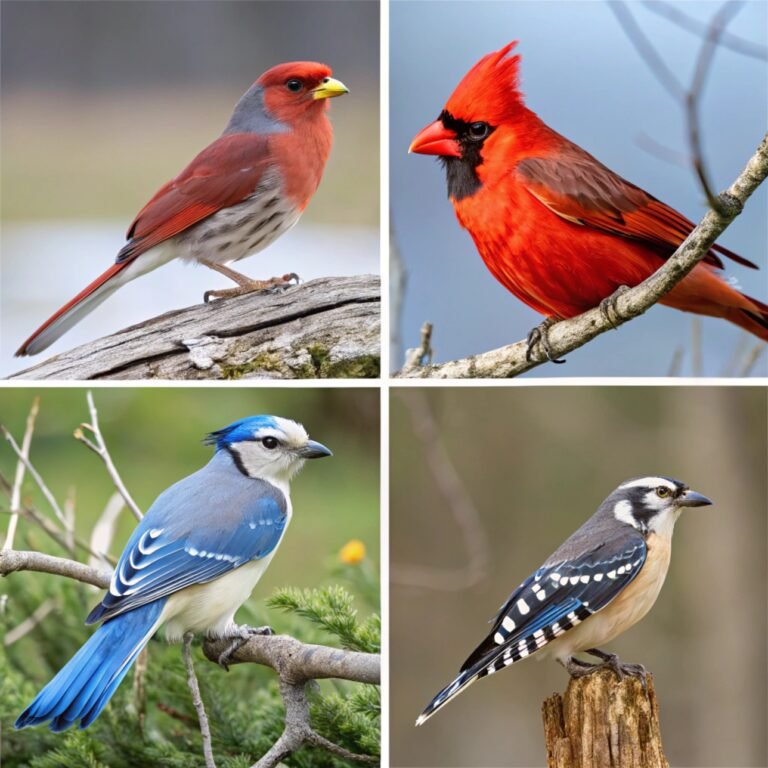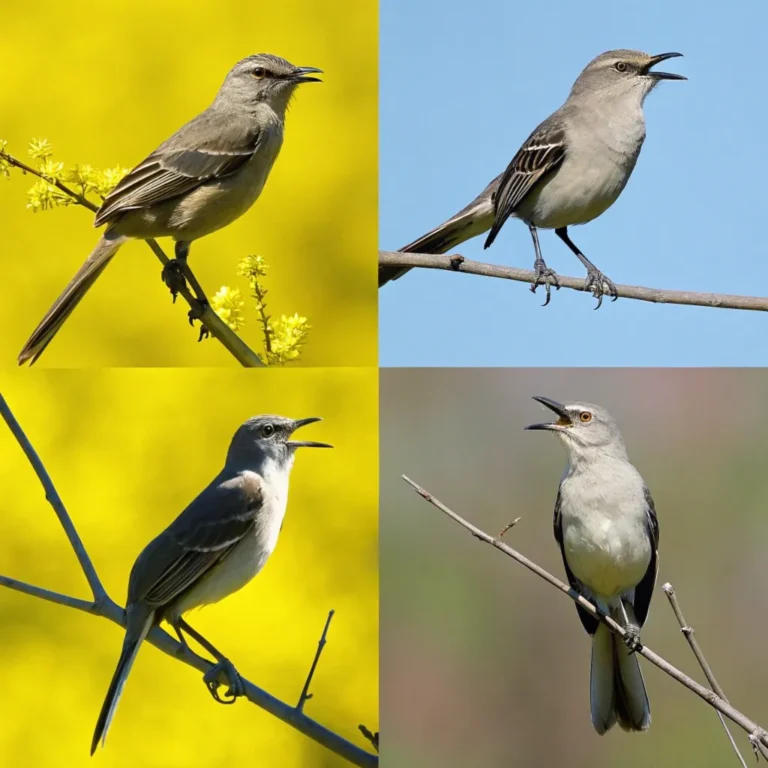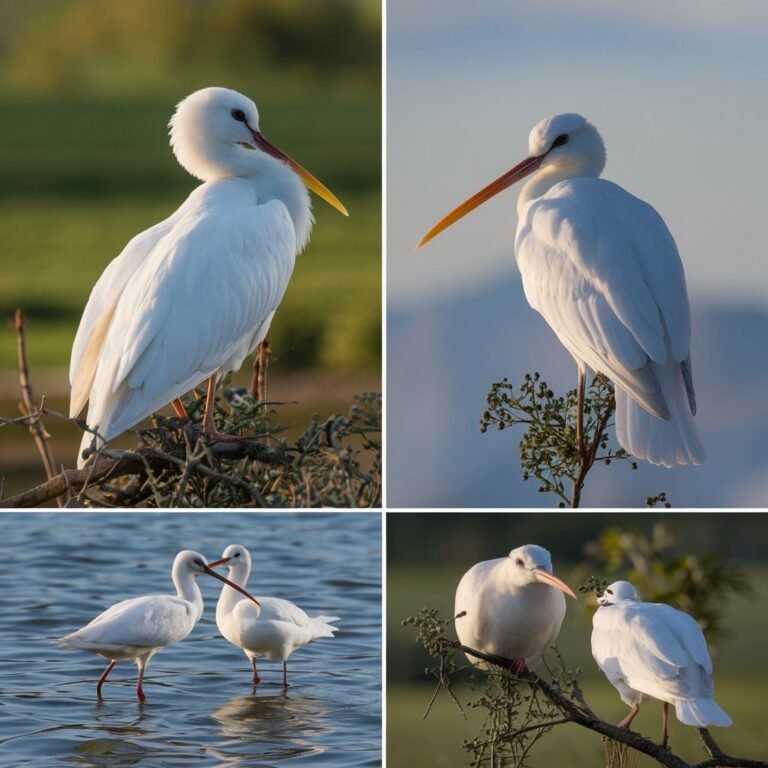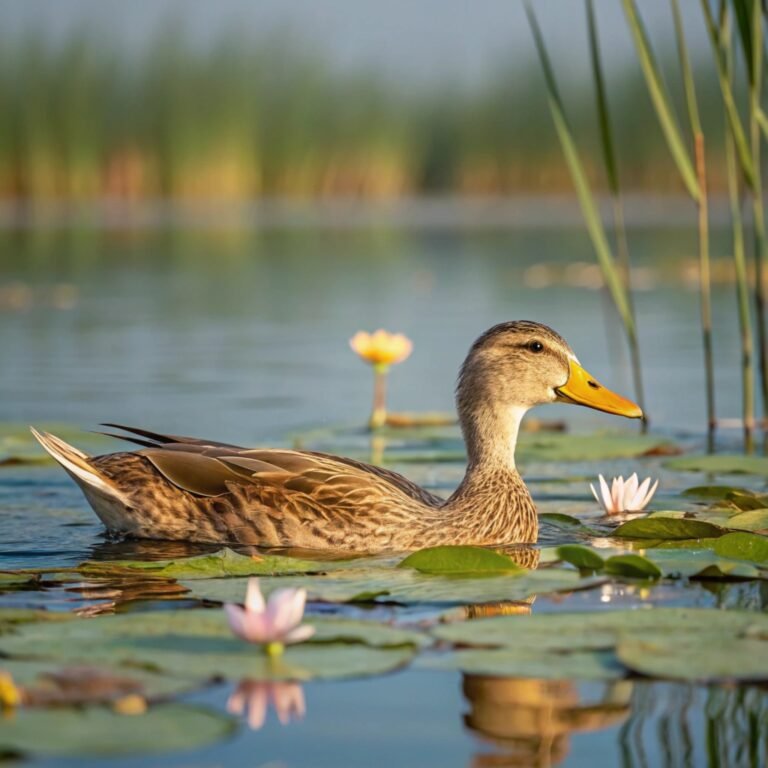13 Stunning Blue Bird Species: A Colorful Journey Through Nature’s Avian Wonders
The world of birds is filled with vibrant hues, but few colors capture our imagination quite like blue.
From the deep azure of tropical seas to the soft cerulean of clear skies, blue birds bring a touch of magic to our natural world.
In this comprehensive exploration, we’ll delve into the lives, habitats, and unique characteristics of 13 stunning blue bird species that showcase nature’s artistic palette.

Key Takeaways:
Before we dive into the details of each species, let’s highlight some fascinating facts about blue birds:
- Diverse Habitats: Blue birds can be found in various environments, from dense forests to open meadows and even urban parks.
- Dietary Adaptability: Many blue bird species have a varied diet, including insects, fruits, and seeds.
- Cultural Significance: In numerous cultures, blue birds symbolize happiness, hope, and new beginnings.
- Conservation Challenges: Some blue bird species face threats due to habitat loss and climate change.
- Unique Adaptations: Blue birds often possess special physical features or behaviors that help them thrive in their specific ecosystems.
- Seasonal Changes: Some species undergo dramatic color changes between breeding and non-breeding seasons.
- Nesting Habits: Many blue birds are cavity nesters, often using natural tree hollows or man-made nest boxes.
- Migratory Patterns: Several blue bird species undertake long-distance migrations, while others are year-round residents in their habitats.
- Social Behaviors: Blue birds exhibit a range of social structures, from highly territorial individuals to large flocks.
- Vocal Abilities: Many blue birds are known for their melodious songs and complex vocalizations.
Eastern Bluebird: The Harbinger of Spring
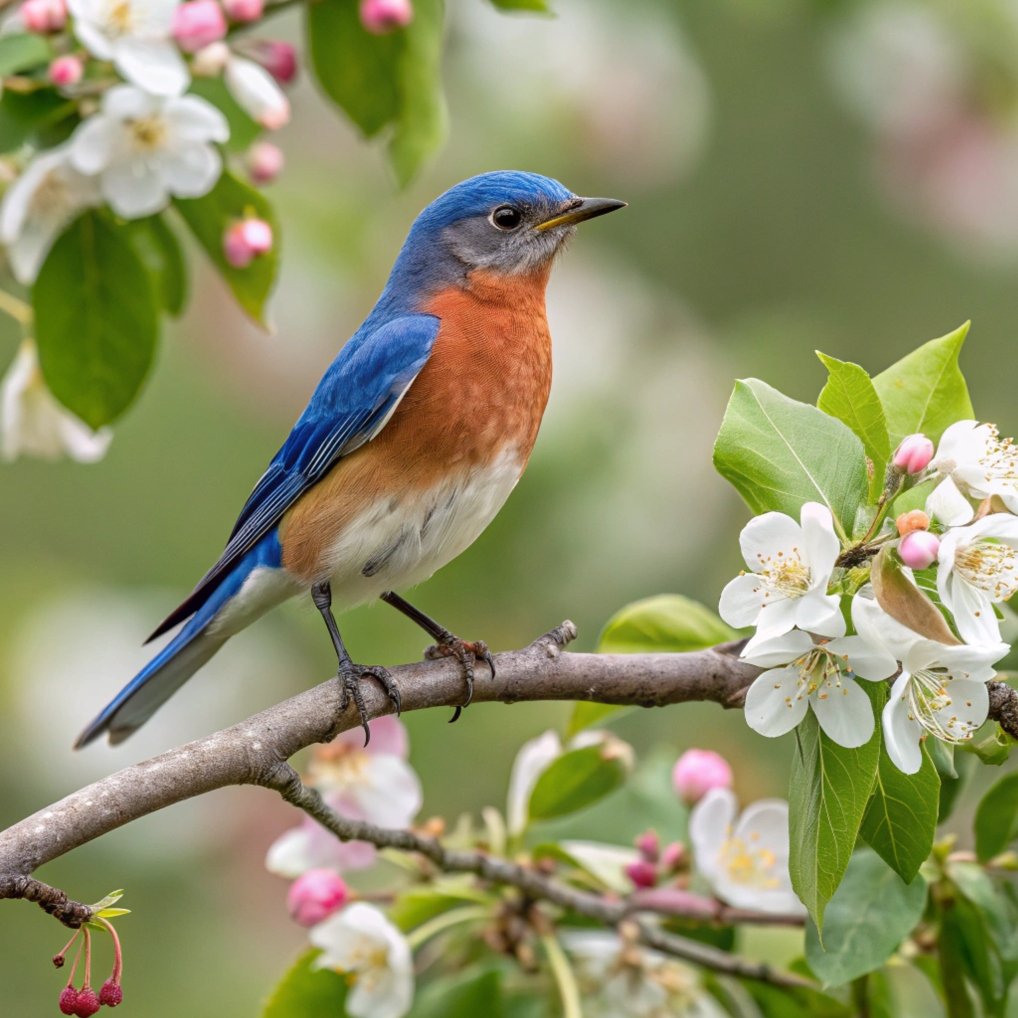
The Eastern Bluebird (Sialia sialis) is a beloved sight across North America, often heralding the arrival of warmer days.
These charming birds boast a vibrant blue upper body contrasted with a rusty-orange breast in males, while females display a more subdued palette.
Eastern Bluebirds thrive in open woodlands, meadows, and suburban areas. They are cavity nesters, readily accepting man-made nest boxes, which has contributed to their population recovery.
Their diet consists primarily of insects during summer, switching to fruits and berries in winter.
Known for their melodious warbling, Eastern Bluebirds play a significant role in pest control by consuming large quantities of insects.
Conservation efforts, including the widespread installation of nest boxes, have helped these beautiful birds rebound from previous population declines.
Western Bluebird: The Jewel of the West

The Western Bluebird (Sialia mexicana) is a stunning species found in western North America.
Males display a rich blue plumage on their head, wings, and tail, complemented by a rusty-orange chest and flanks. Females exhibit a more muted coloration with grey-blue wings and tail.
These birds prefer open woodlands and forest edges, often seen perched on fence posts or low branches.
Western Bluebirds are opportunistic feeders, consuming a variety of insects during summer and fruits in winter. They are known for their gentle demeanor and soft, warbling calls.
Conservation efforts, including the provision of nest boxes, have helped stabilize Western Bluebird populations in many areas.
These beautiful birds play a crucial role in their ecosystems as both insect controllers and seed dispersers.
Mountain Bluebird: The Sky-Blue Wonder

The Mountain Bluebird (Sialia currucoides) is a breathtaking sight with its ethereal sky-blue plumage. Males are an almost uniform bright blue, while females display a more subtle grey-brown coloration with blue tinges on wings and tail.
As their name suggests, Mountain Bluebirds inhabit higher elevation areas across western North America.
They thrive in open, mountainous regions, meadows, and prairies. These birds are expert hover-hunters, often seen suspended in mid-air before diving to catch insects.
Mountain Bluebirds are highly adaptable, adjusting their nesting and feeding habits to various environments.
Their population has benefited from conservation efforts, including the installation of nest boxes in areas where natural cavities are scarce.
Indigo Bunting: The Sapphire Songster
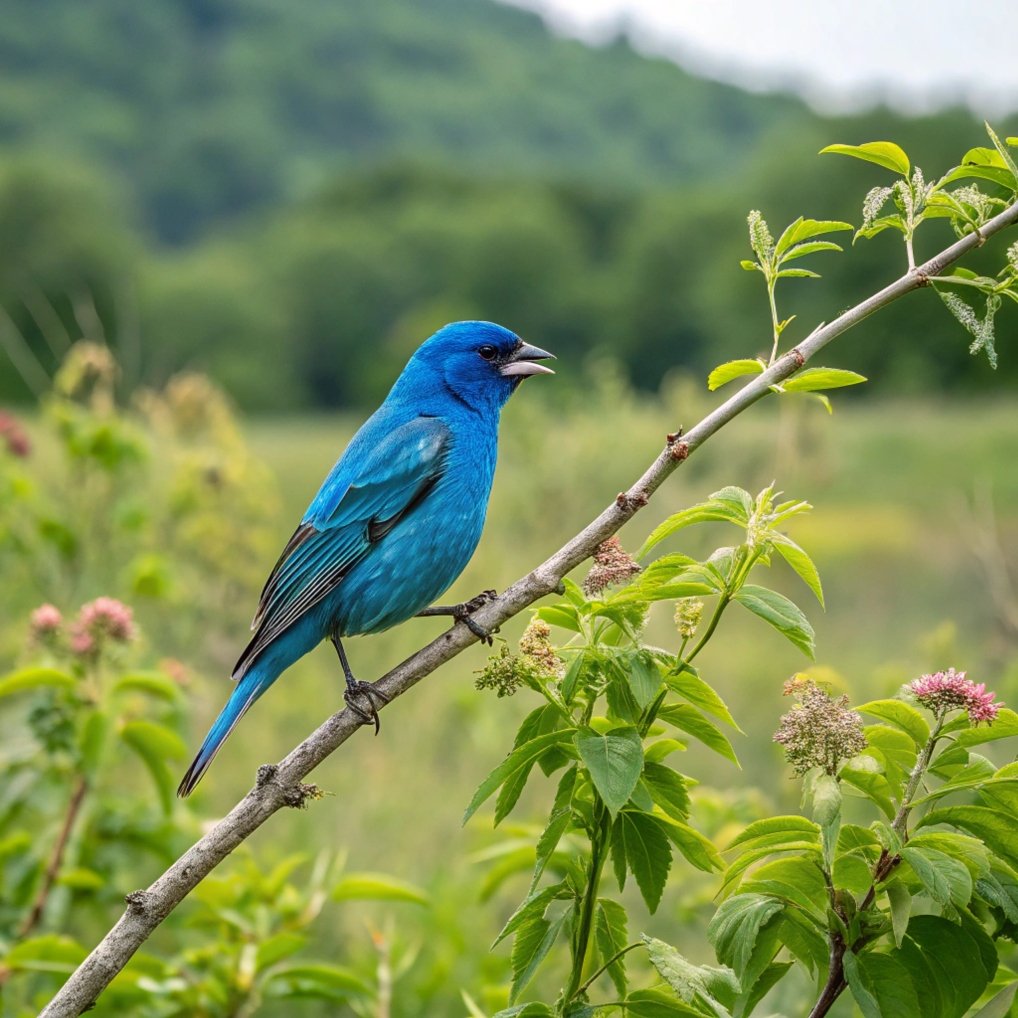
The Indigo Bunting (Passerina cyanea) is a small but striking bird, with breeding males showcasing an intense, all-over blue plumage that seems to shimmer in sunlight.
Females and non-breeding males are a more subdued brown, providing excellent camouflage.
These birds prefer brushy forest edges, overgrown fields, and roadside thickets. Indigo Buntings are prolific singers, often perching atop tall vegetation to deliver their cheerful, warbling songs. Their diet consists mainly of seeds and insects.
Indigo Buntings are long-distance migrants, traveling from North America to Central America and the Caribbean during winter.
Despite facing challenges from habitat loss, their populations remain relatively stable due to their adaptability.
Blue Jay: The Intelligent Azure Beauty
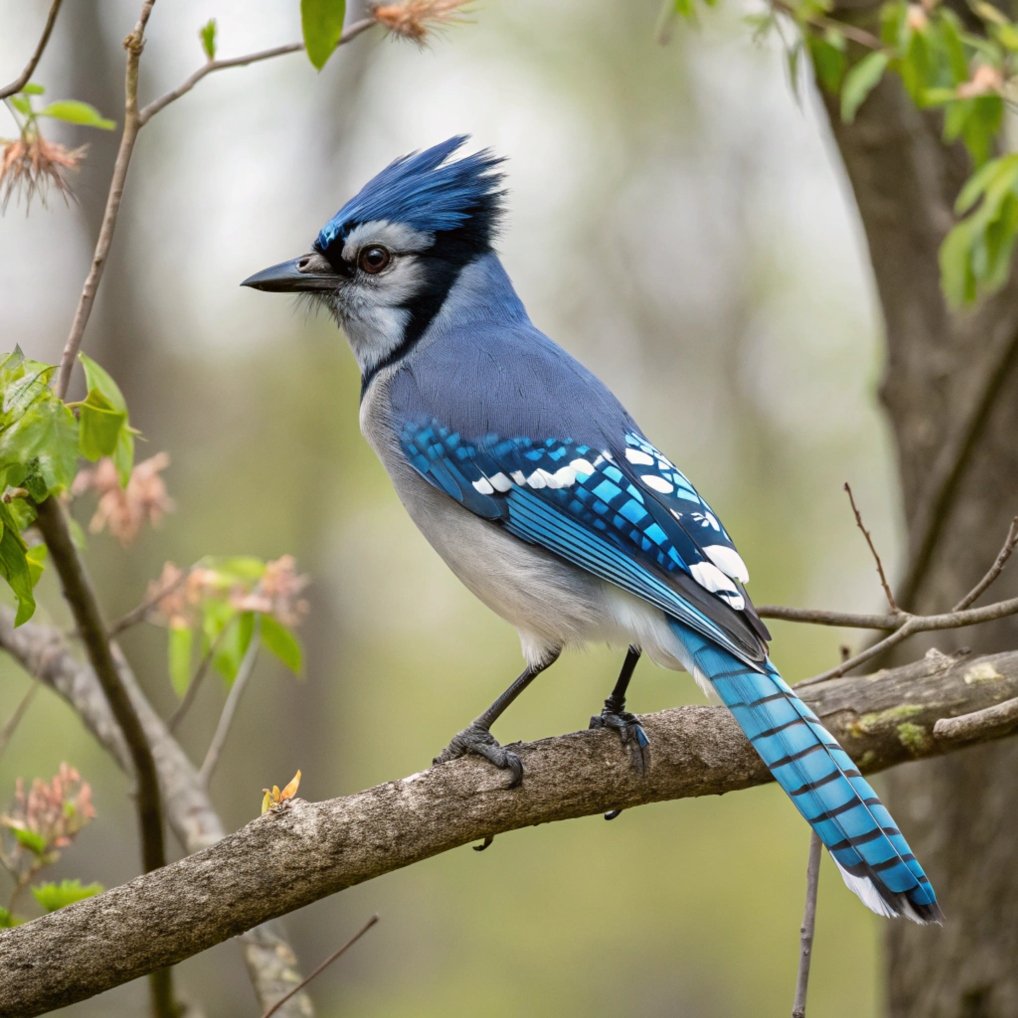
The Blue Jay (Cyanocitta cristata) is a familiar and charismatic bird across eastern North America.
With its bright blue plumage, contrasting white chest, and distinctive crest, the Blue Jay is easily recognizable. These birds are known for their intelligence and complex social behaviors.
Blue Jays inhabit a variety of wooded areas, from forests to suburban neighborhoods. They are omnivorous, feeding on nuts, seeds, insects, and occasionally small vertebrates.
Their diet and caching behavior play a crucial role in forest ecology, particularly in oak tree dispersal.
These birds are known for their loud, varied vocalizations and their ability to mimic other birds and even human-made sounds. While sometimes considered aggressive, Blue Jays are also known for their strong family bonds and cooperative behaviors.
Hyacinth Macaw: The Gentle Giant of the Parrot World
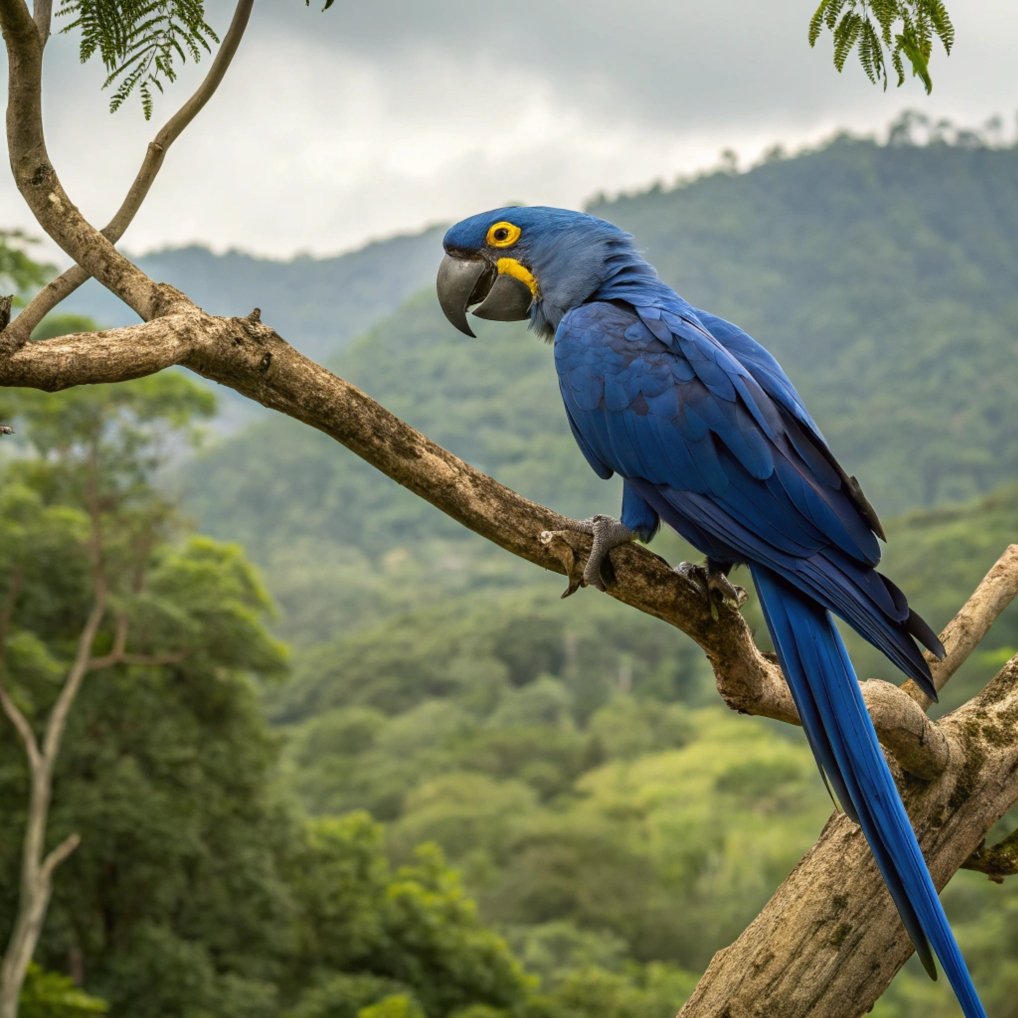
The Hyacinth Macaw (Anodorhynchus hyacinthinus) is the largest flying parrot species and a true marvel of the bird world.
Its cobalt-blue plumage and distinctive yellow eye rings make it an unforgettable sight in its native South American habitats.
These magnificent birds inhabit palm swamps, woodland edges, and other semi-open areas in the Amazon and Pantanal regions.
Hyacinth Macaws have a specialized diet, primarily feeding on the nuts of specific palm species. Their powerful beaks are perfectly adapted for cracking these hard nuts.
Despite their size, Hyacinth Macaws are known for their gentle and playful nature. However, they face significant threats from habitat loss and illegal pet trade. Conservation efforts are crucial for ensuring the survival of these stunning blue giants.
Blue Grosbeak: The Melodious Sapphire

The Blue Grosbeak (Passerina caerulea) is a medium-sized songbird with a striking appearance.
Males display a deep blue plumage with rusty wing bars, while females have a warm brown coloration. Their large, conical beaks are perfectly adapted for cracking seeds.
These birds prefer shrubby areas, overgrown fields, and woodland edges. Blue Grosbeaks are known for their rich, warbling songs, often delivered from exposed perches. Their diet consists of a mix of seeds, insects, and small fruits.
Blue Grosbeaks are migratory, breeding in southern and central North America and wintering in Mexico and Central America. While not currently threatened, they benefit from conservation efforts that preserve their preferred habitats.
Fairy Bluebird: The Tropical Jewel

The Asian Fairy Bluebird (Irena puella) is a stunning bird found in the tropical forests of South and Southeast Asia.
Males display an iridescent, cobalt-blue plumage that seems to glow in forest light, while females have a more subdued blue-green coloration.
These birds inhabit dense, humid forests, preferring the canopy and upper levels of vegetation.
Fairy Bluebirds are primarily frugivorous, playing a crucial role in seed dispersal within their ecosystems. Their diet is supplemented with insects and nectar.
Known for their melodious calls and striking appearance, Fairy Bluebirds are a prized sight for birdwatchers. While currently not globally threatened, they face localized pressures from habitat loss and fragmentation in some parts of their range.
Blue-and-Yellow Macaw: The Vibrant Amazon Icon
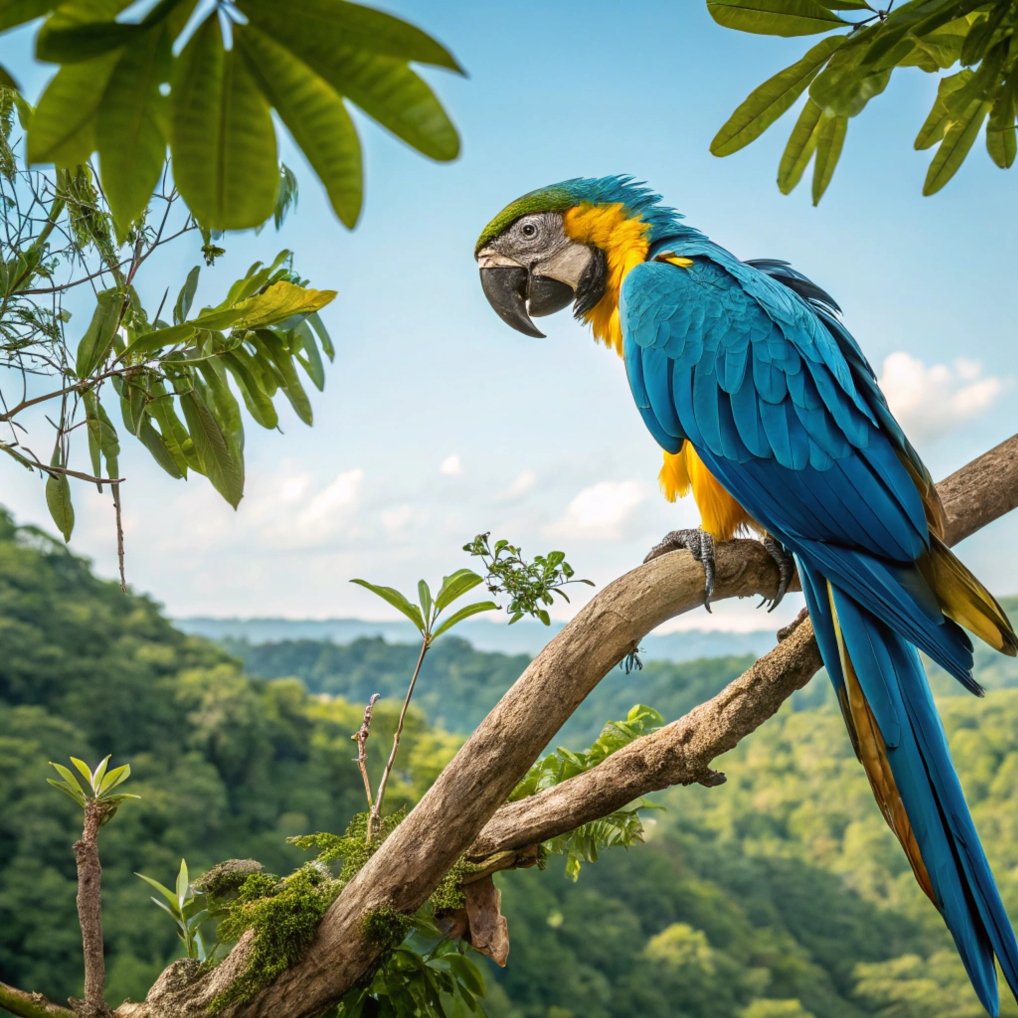
The Blue-and-Yellow Macaw (Ara ararauna), also known as the Blue-and-Gold Macaw, is a large and colorful parrot native to South America.
Its striking combination of deep blue upper body and bright yellow underparts makes it one of the most recognizable parrots in the world.
These magnificent birds inhabit a variety of forest types, including rainforests, palm groves, and savanna-like areas.
Blue-and-Yellow Macaws are highly intelligent and social, often seen flying in pairs or small groups. Their diet consists mainly of nuts, fruits, and seeds.
Known for their loud vocalizations and playful nature, these macaws are popular in the pet trade, which, combined with habitat loss, has led to population declines in some areas.
Conservation efforts focus on habitat protection and sustainable management practices.
Splendid Fairywren: The Australian Sapphire
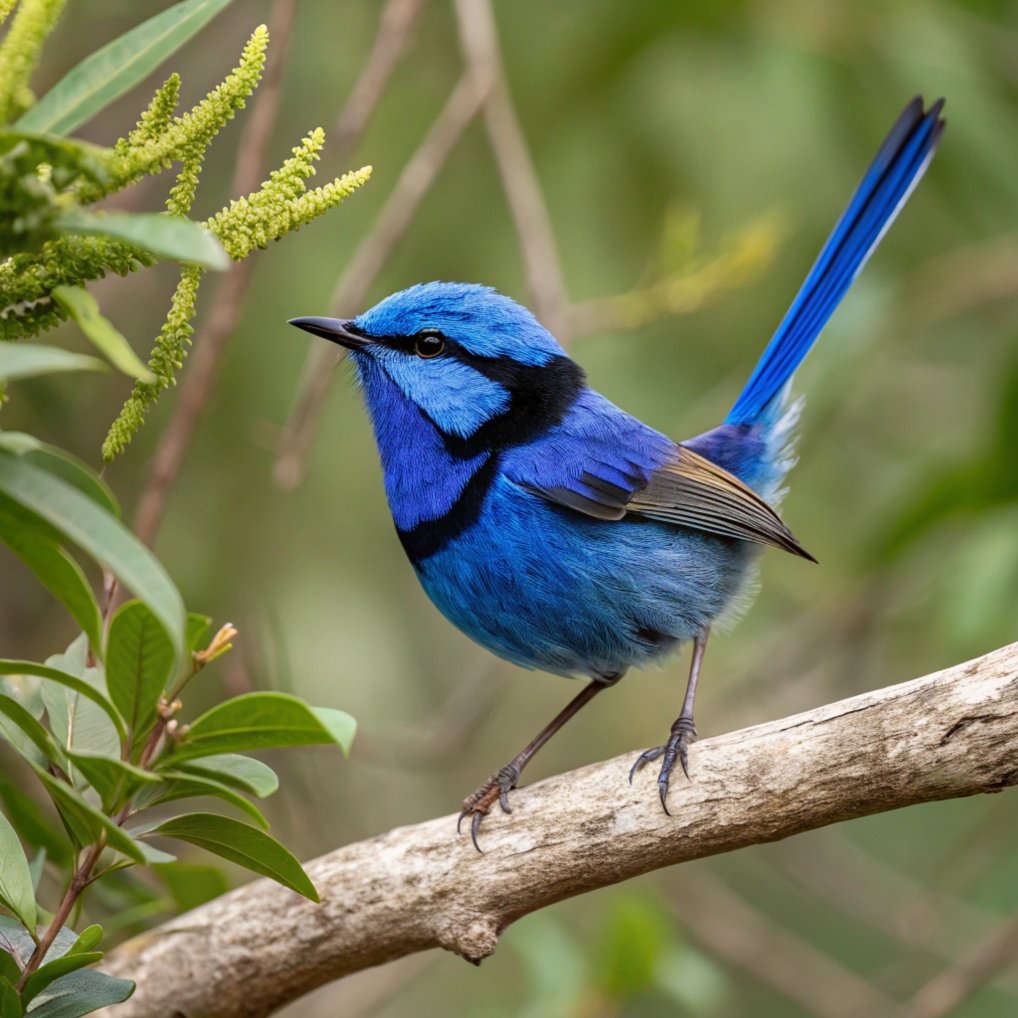
The Splendid Fairywren (Malurus splendens) is a small but spectacularly colored bird native to Australia.
Breeding males sport a brilliant blue plumage with striking black markings, while females and non-breeding males have a more subdued brown coloration.
These energetic birds inhabit a range of habitats, from scrublands to urban gardens. Splendid Fairywrens are highly social, often seen in small family groups. They are insectivorous, foraging on the ground and in low vegetation for small invertebrates.
Known for their complex social behaviors and cooperative breeding systems, Splendid Fairywrens have fascinated researchers and bird enthusiasts alike.
While generally common in their range, they benefit from conservation efforts that preserve native vegetation.
Indian Roller: The Sapphire of South Asia

The Indian Roller (Coracias benghalensis), also known as the Blue Jay in some regions, is a striking bird found across South Asia. It displays a mix of blue hues, from pale blue on its head to deep indigo on its wings and tail.
These birds prefer open woodland, grasslands, and agricultural areas. Indian Rollers are known for their acrobatic flight displays during breeding season, which involve rolling and diving maneuvers. They are primarily insectivorous but will also eat small reptiles and rodents.
In many South Asian cultures, the Indian Roller holds cultural significance and is associated with good fortune.
While not globally threatened, they face localized pressures from habitat alteration and pesticide use in agricultural areas.
Blue Tit: The Charming European Songbird
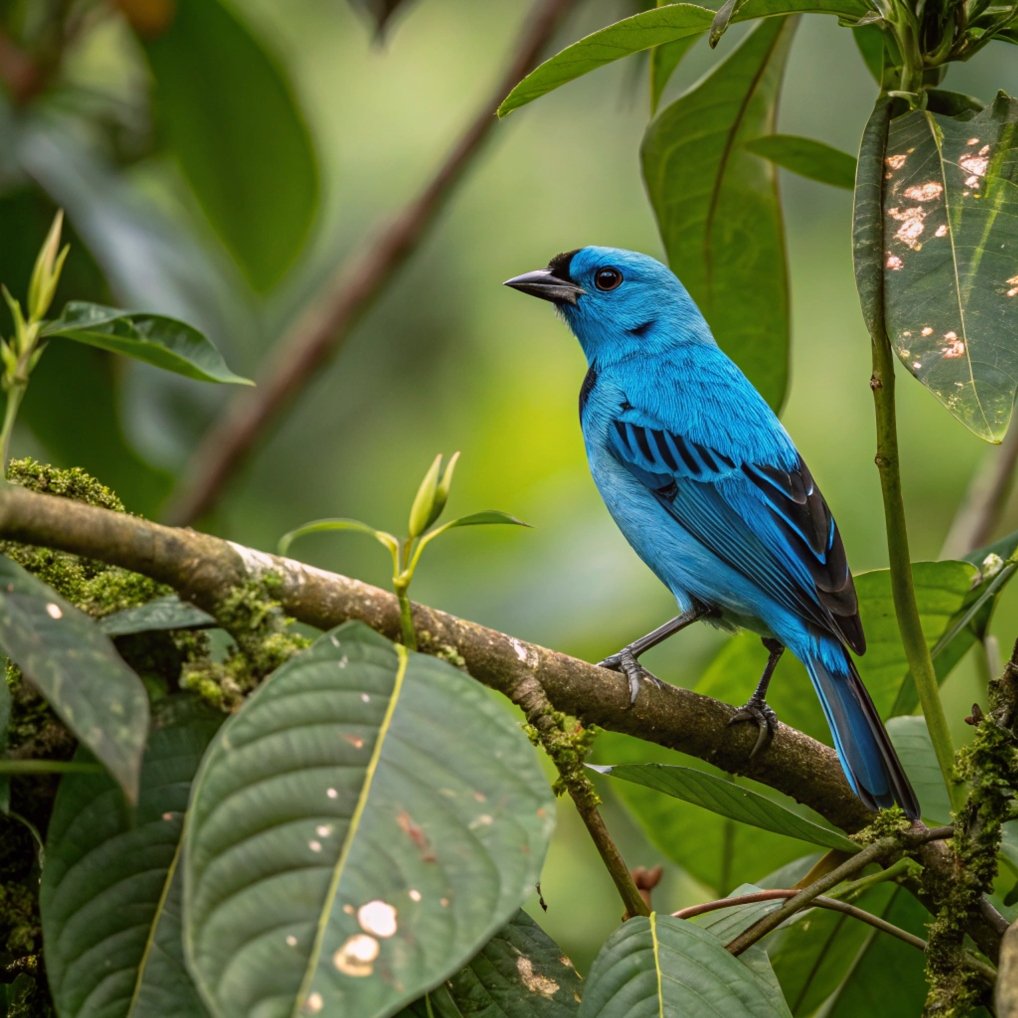
The Blue Tit (Cyanistes caeruleus) is a small, vibrant bird common across Europe and parts of the Middle East. It features a distinctive blue crest and wings, contrasting with its yellow breast and white face.
These agile birds are found in a variety of wooded habitats, from forests to urban parks. Blue Tits are known for their acrobatic feeding habits, often seen hanging upside down to reach insects and seeds.
They readily visit bird feeders, making them a favorite among garden birdwatchers.
Blue Tits are highly adaptable and have shown remarkable ability to adjust to urban environments.
Their populations are generally stable, but they benefit from conservation efforts that preserve old trees for nesting and promote wildlife-friendly gardening practices.
Steller’s Jay: The Crested Beauty of Western Forests

The Steller’s Jay (Cyanocitta stelleri) is a striking bird of western North American forests. It features a dark blue body with black head and crest, often with white eyebrow streaks. This species is known for its bold personality and intelligent behavior.
Steller’s Jays inhabit coniferous and mixed forests, often venturing into nearby residential areas.
They are omnivorous, with a diet ranging from nuts and seeds to small animals and even the eggs of other birds. Their loud, harsh calls are a familiar sound in their forest habitats.
These jays are known for their problem-solving abilities and complex social behaviors. While generally common in their range, they face challenges from habitat fragmentation and climate change in some areas.
Conservation efforts focus on preserving large tracts of mature forest ecosystems.
FAQs
What makes some birds appear blue?
The blue color in birds is not due to pigments but rather to the structure of their feathers. The feather barbs scatter light in a way that only blue wavelengths are reflected back to our eyes, creating the appearance of blue coloration.
Are all blue birds related to each other?
No, blue birds are not necessarily closely related. The blue coloration has evolved independently in various bird families across different continents.
Do blue birds change color throughout the year?
Some blue bird species, like the Indigo Bunting, can appear dramatically different between breeding and non-breeding seasons due to molting and feather wear.
Are blue birds more common in certain parts of the world?
Blue birds can be found worldwide, but certain regions, like tropical rainforests and temperate woodlands, tend to have a higher diversity of blue-colored species.
How can I attract blue birds to my garden?
Providing appropriate nesting boxes, offering a mix of seeds and insects, and maintaining a pesticide-free environment can help attract blue birds to your garden.
Are blue birds endangered?
While some blue bird species face conservation challenges, many are not currently endangered. However, habitat loss and climate change pose ongoing threats to various bird populations worldwide.

Hello, I’m Emily Price, the founder of Birds Affection. As a passionate bird enthusiast and spiritual seeker, I’ve always been fascinated by the symbolic meanings and mystical connections between birds and our lives. On this website, I share my knowledge and insights on the spiritual significance of various bird species, exploring their roles as messengers, guides, and teachers. Through my writing, I aim to inspire and educate others on the profound wisdom and beauty that birds bring to our world. Join me on this journey as we delve into the enchanting realm of bird symbolism and discover the hidden meanings behind these magnificent creatures.


